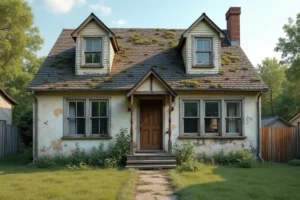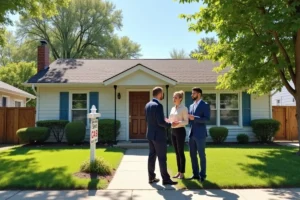How to Plan for Home Maintenance Costs Before You Buy
Becoming a homeowner is an exciting achievement, but the financial responsibilities extend well beyond making your monthly mortgage payments. Buyers must look ahead and recognize the often-overlooked but recurring home maintenance costs. Often, new owners are surprised to discover that repairs, seasonal upkeep, and system replacements can take a significant bite out of their budget.
Understanding the full financial picture is key to avoiding unexpected costs and securing investment. A real estate expert emphasizes educating buyers about these “hidden” expenses before closing, ensuring they are financially ready for homeownership. Fairfax County VA real estate agent Cheryl Folmer.
This comprehensive approach means considering the purchase price and the ongoing costs required to keep your property safe, efficient, and enjoyable. Home maintenance is inevitable; these expenditures can add up quickly, from repairing HVAC systems to re-roofing, especially if not anticipated. With inflation driving up the cost of labor and materials, setting a realistic budget for home maintenance is more important than ever for those preparing to buy.
Estimating Annual Maintenance Expenses
A well-accepted guideline when budgeting for home maintenance is to reserve approximately 1% to 4% of your home’s value each year. For example, with a home valued at $350,000, you should set aside between $3,500 and $14,000 annually for repairs and routine care.
This range accounts for differences in location, the age of the home, and its specific condition. Newer homes may land at the lower end, while older homes or those with unique amenities will likely require a larger reserve fund. Being proactive about these calculations will keep you from scrambling financially when the inevitable maintenance issues arise.
Factors Influencing Maintenance Costs
- Age of the Home: As homes age, structural components, appliances, and systems naturally require more frequent service or replacement.
- Location: Weather extremes, such as harsh winters, hurricanes, or humid climates, can speed up wear and tear and increase preventive maintenance needs.
- Size and Features: Larger homes or those with premium amenities—like pools, finished basements, or elaborate landscaping—often demand more time and higher expenditures to maintain.
Creating a Home Maintenance Budget
Smart planning starts before you make an offer. At the outset, conduct a detailed assessment of the property’s current condition. A reputable home inspection will highlight immediate repair needs and future concerns, which you can factor into your budget from day one. Next, research the typical repair costs in your region—prices for labor and materials can vary widely from one market to another.
Setting up a dedicated savings fund specifically for home-related expenses is one of the best ways to ensure funds are always available when something needs fixing. By allocating a regular monthly amount, you’ll avoid dipping into emergency savings and reduce the stress when big-ticket repairs become necessary.
Preventive Maintenance: A Cost-Saving Strategy
Staying ahead of small repairs is one of the most effective ways to control homeownership costs. Regular preventive maintenance—such as cleaning gutters, caulking windows, servicing the HVAC system, and periodically inspecting the roof—helps prevent minor issues from developing into expensive emergencies. This routine care protects your home’s value and extends the lifespan of critical systems and surfaces, reducing your long-term expenses.
Utilizing Professional Inspections
Before closing on a property, a comprehensive inspection from a licensed professional is vital to uncovering hidden defects and deferred maintenance. These evaluations offer buyers the knowledge needed to negotiate repairs, request concessions, or adjust their offer based on the home’s true condition. Even after purchase, periodic specialty inspections (for roofs or foundations) are wise investments to catch problems early and plan for major replacements or upgrades.
Considering Home Warranties
Some buyers invest in a home warranty, which can offset the immediate costs of repairing or replacing major home systems and appliances. While warranties can provide peace of mind, their coverage is limited by specific terms, exclusions, and caps. It’s important to review what is included—heating, plumbing, or electrical—and be aware of limitations. For many, a well-managed savings fund offers the same security with fewer restrictions on how funds are used.
Final Thoughts
Planning for ongoing home maintenance costs is a fundamental element of wise homeownership. You’ll protect your home and pocketbook by understanding potential expenses, building a realistic reserve, scheduling preventive care, and taking advantage of inspections and warranties. Preparation is the best strategy to ensure your dream home remains a source of joy, rather than a surprise source of stress.







0